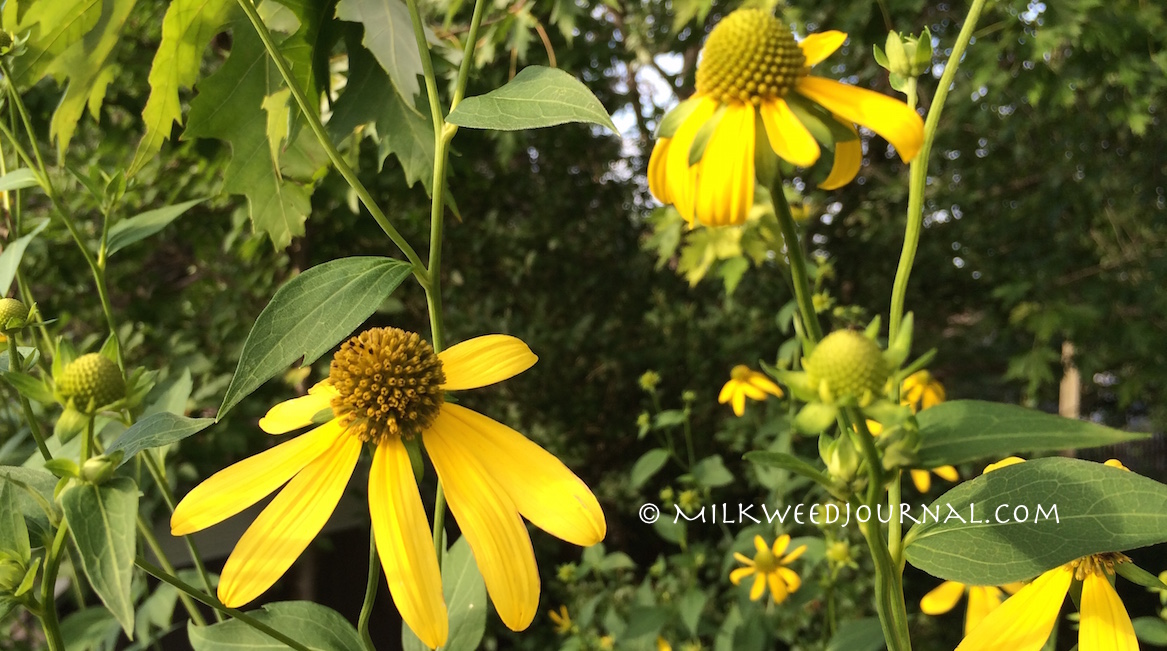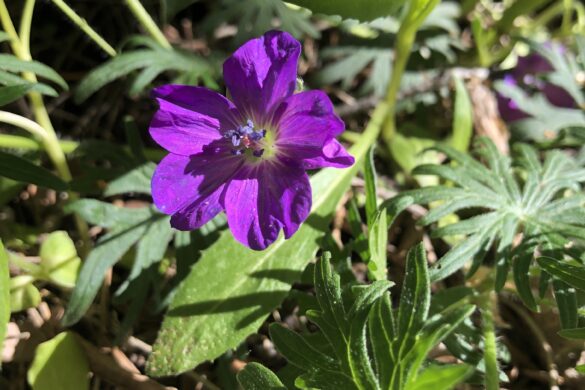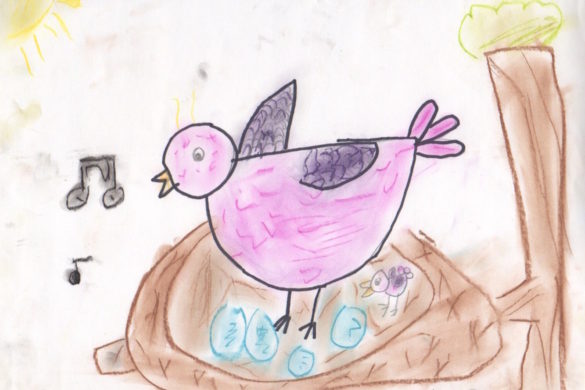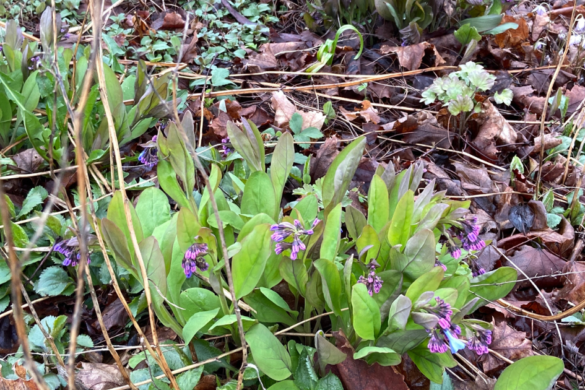It’s always easy to get carried away at plant sales. And as my fabulous new finds go in the ground, I’m quite sure I’ll remember each and every one when next spring rolls around. So I sometimes neglect to keep track of what I’ve purchased, or what I’ve planted where.
As a result, when a new growing season begins, I can find myself playing a guessing game, trying to avoid pulling out a perennial under the mistaken notion it is a weed.
Patience is my ally, however. So I watch and wait as the plants grow and reveal themselves for what they are.
The biggest mystery this summer was a plant that had grown oh-so-high by late July, verging on seven or eight feet tall, with deeply toothed leaves. Who are you? I’d wonder day after day, watching it reach ever higher, without any sign of the flowers that would help me name it.
I checked sources here and there and turned up nothing – all I really had to go on was the tremendous, slender height of the thing, and the jagged leaves. Finally, as July became August, yellow buds began to appear, ridiculously tiny at first, given such great green height.
Then I noticed those little yellow flowers were elongating, pointing downward towards the stem. Looking more and more like a … coneflower! But wait a minute: A skyscraper version of a coneflower?
With more to go on, I Googled “tall coneflower” and voilà – a Wikipedia entry for Rudbeckia laciniata – also known as cutleaf coneflower and/or green-headed coneflower. I suddenly recalled the purchase at the University of Guelph Arboretum; at the time I had no idea a green-headed coneflower would turn out to be so incredibly tall.
A little more research reveals that Rudbeckia laciniata is a southern Ontario native that attracts birds, native bees and butterflies, including the Pearl Crescent (Phyciodes tharos), Silvery Checkerspot (Chlosyne nycteis) and Wavy-lined Emerald (Synchlora aerate) butterflies.
The Lady Bird Johnson Wildflower Centre notes that this coneflower “spreads rampantly by underground stems” – yes, I see that – and suggests it is most “appropriate for large sites.”
My garden is not large and this green-headed coneflower, with its ample clusters of brilliant yellow blooms, has been the star of the show for a few weeks now. It is, however, best planted in a mass, especially before a simple, solid, supportive background like a cedar hedge or wall, with shorter perennials out front (Joe Pye weed makes a lovely companion).
Mystery solved. Patience rewarded. A new favourite discovered.
— Stacey
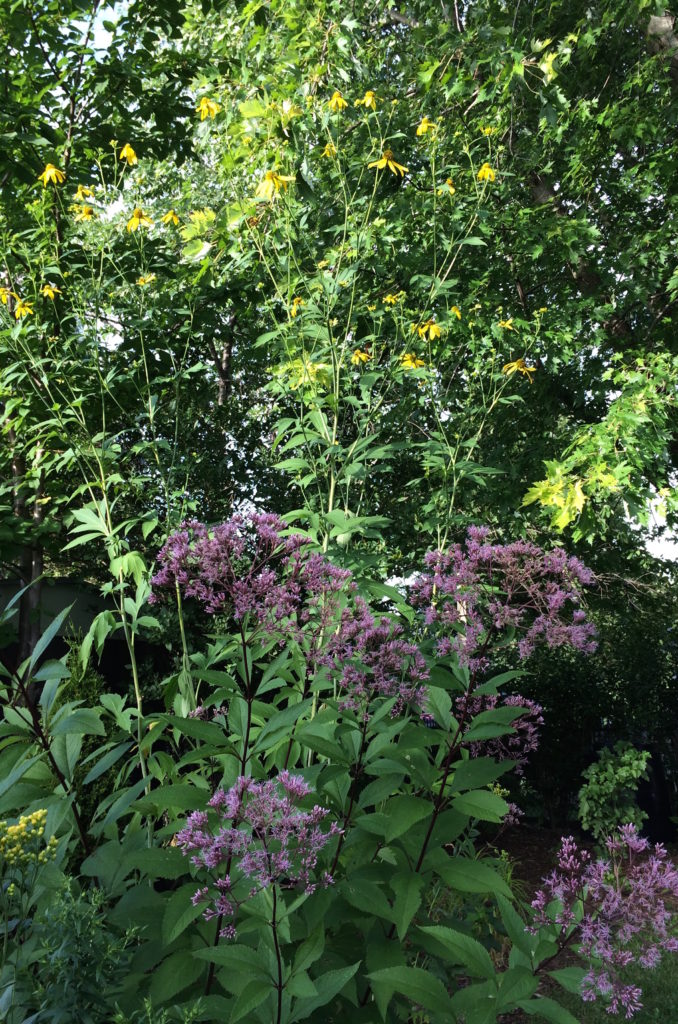
A mass of green-headed coneflowers with Joe Pye weed in the foreground.
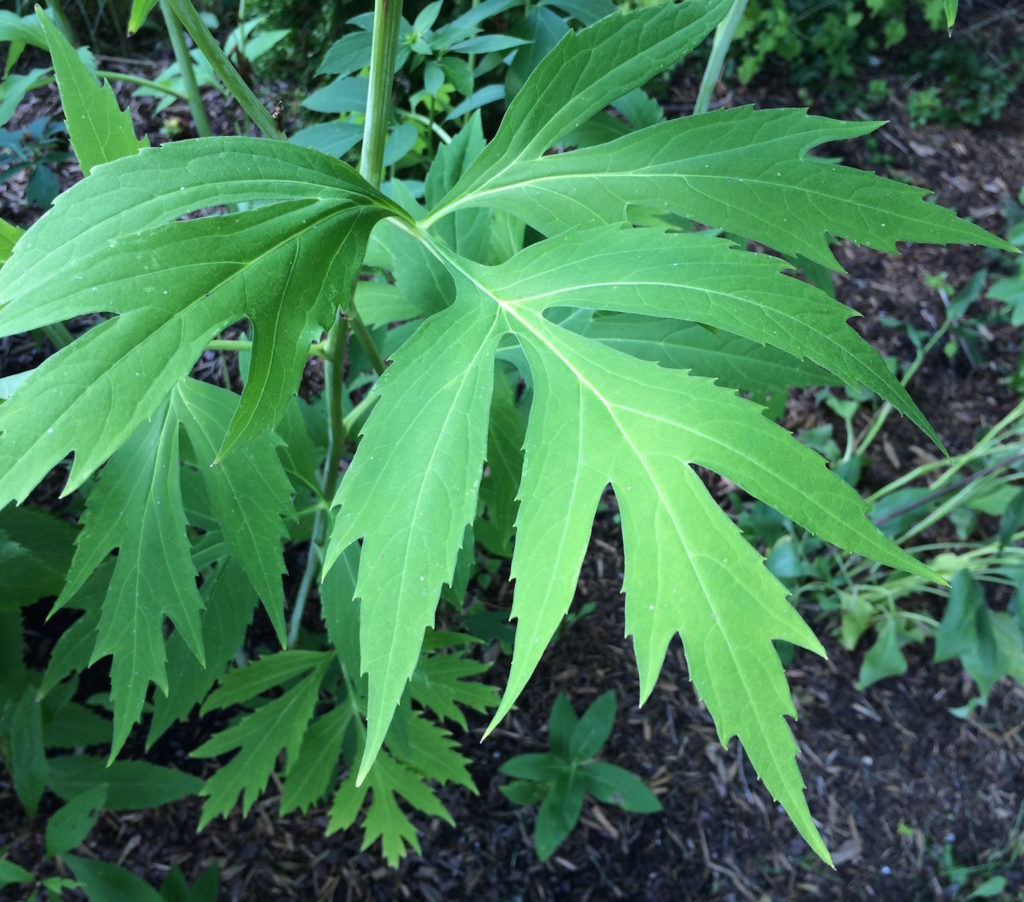
Green-headed coneflower leaves.
© 2016, Milkweed Journal. All rights reserved. This article is the property of Milkweed Journal. If you would like to use a short excerpt, please provide credit to Milkweed Journal and include a link back to the original post on our site or use the social sharing tools available along the side. Please email us at [email protected] if you have any questions. Thank you!

